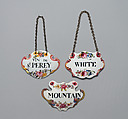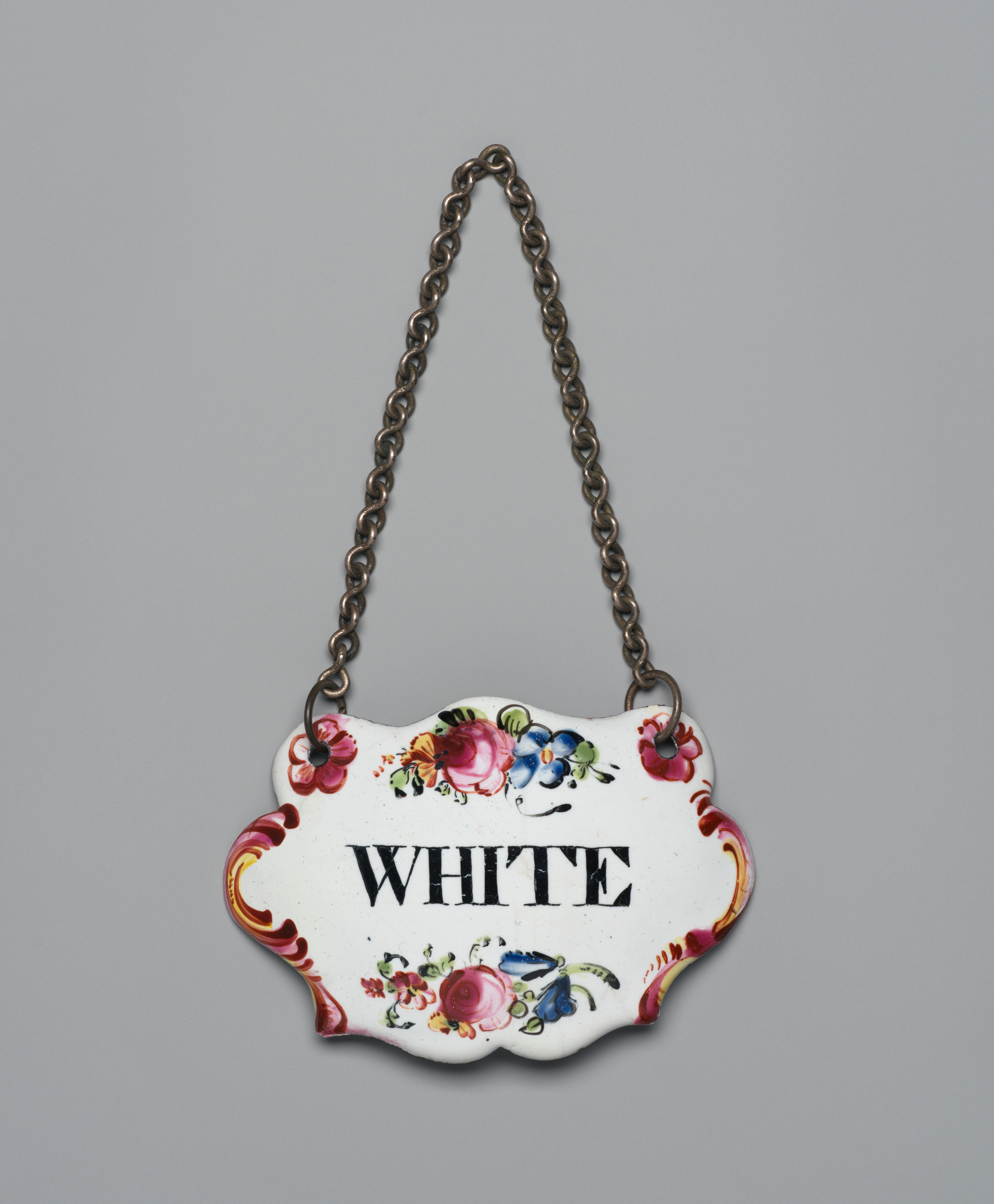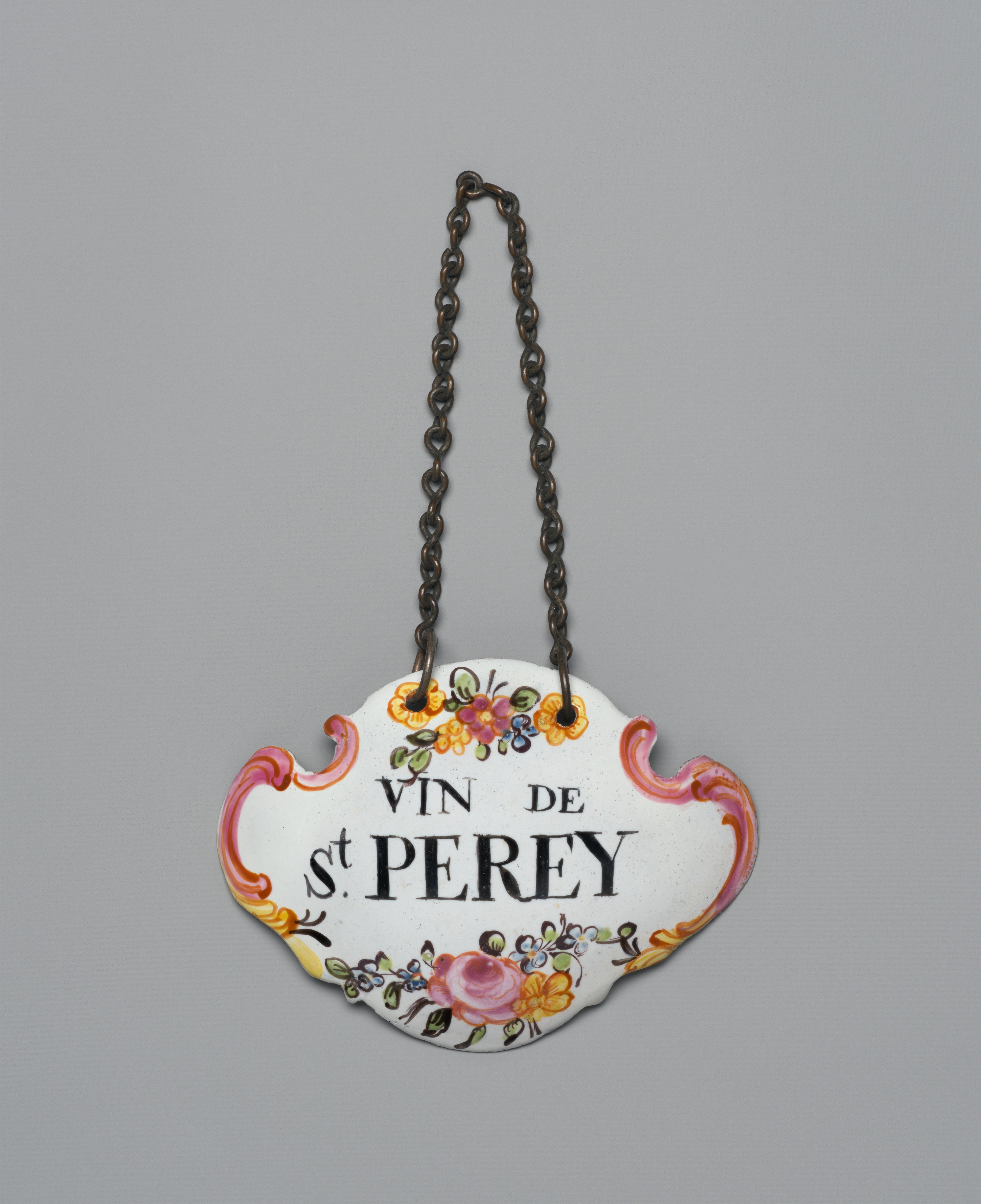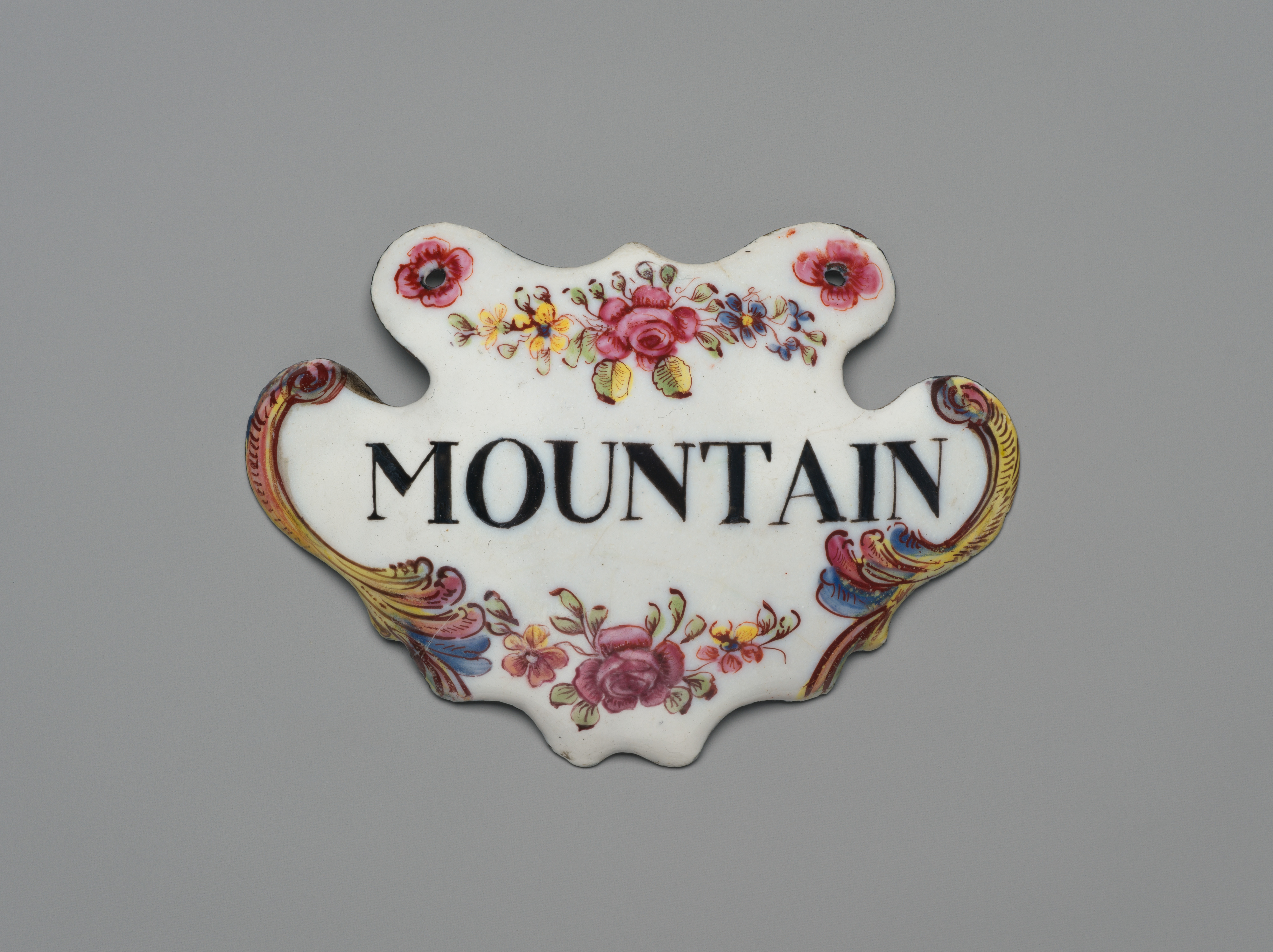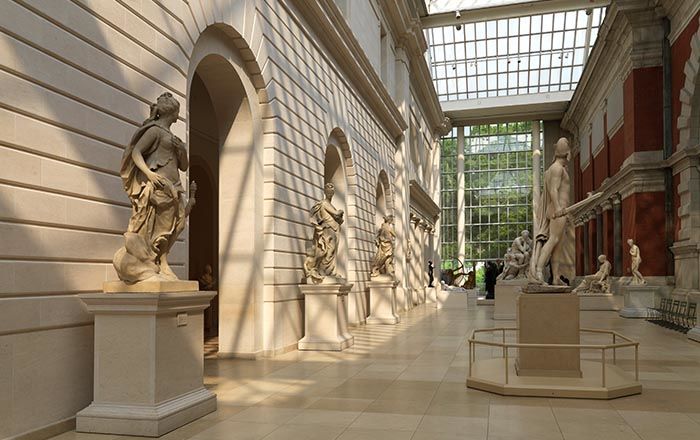Three bottle tickets
British, possibly South Staffordshire, possibly Birmingham
Not on view
Inscribed "Mountain" (referring to a Spanish wine), "Vin de St. Perey," and "White," respectively, these labels would have identified the contents of a decanter (a more elegant alternative to a wine bottle) at the dinner table.
Bottle tickets were sold alongside other luxurious trinkets, known as "toys," through which wealth and taste could be displayed. Some toys were functional, intended to store foodstuffs, cosmetic products, or snuff; others were intended for no purpose other than to delight. Some were made of precious metals, like gold or silver, and were sold at correspondingly high prices; others employed relatively inexpensive materials and were thus available to the expanding middle classes.
Enameled objects like this one, intended to imitate the lustrous quality of porcelain, were among the more affordable goods sold at toyshops across London and in fashionable English resort towns. Though often called "Battersea enamels" in common parlance (referring to the manufactory at York House, Battersea, operating only between 1753 and 1756), we rarely know exactly where individual pieces were made. The main centers of enamel production were in London, South Staffordshire (particularly in Bilston and Wednesbury), and Birmingham.
By the middle of the eighteenth century, technological innovations had made it possible to roll copper, instead of the far costlier gold, into very thin sheets. Powdered glass mixed with minerals (to determine the opacity and color of the enamel) would then be applied onto the copper sheets and fired at high temperatures. A design—whether a famous portrait, generic pastoral scene, or floral motif— could be painted on by hand or copied from an engraving through the newly invented process of transfer printing. Many enameled objects combined both methods of decoration and would be refired after the application of each new layer or color.
This image cannot be enlarged, viewed at full screen, or downloaded.
This artwork is meant to be viewed from right to left. Scroll left to view more.
